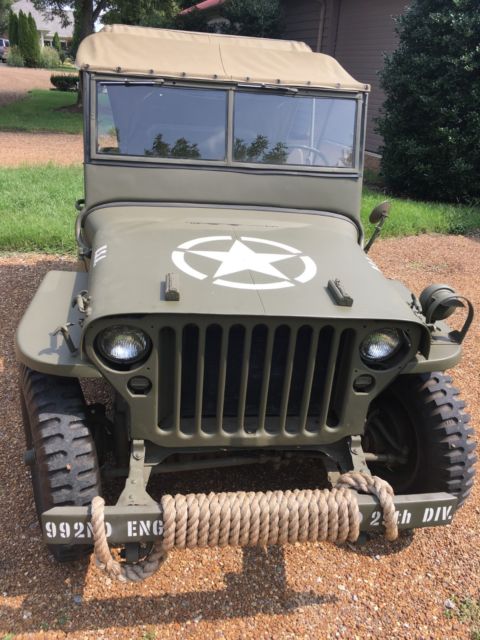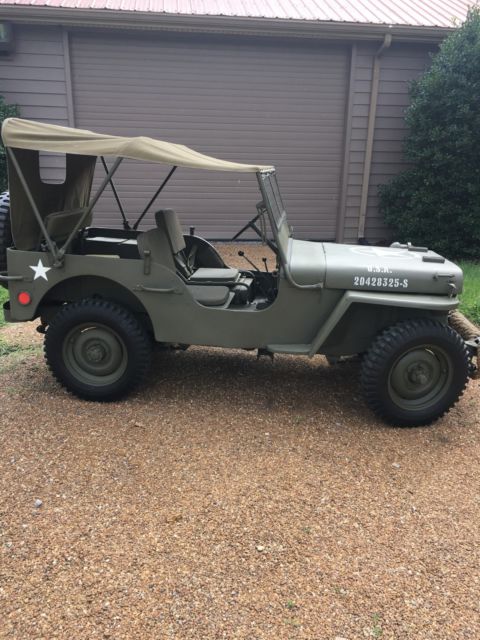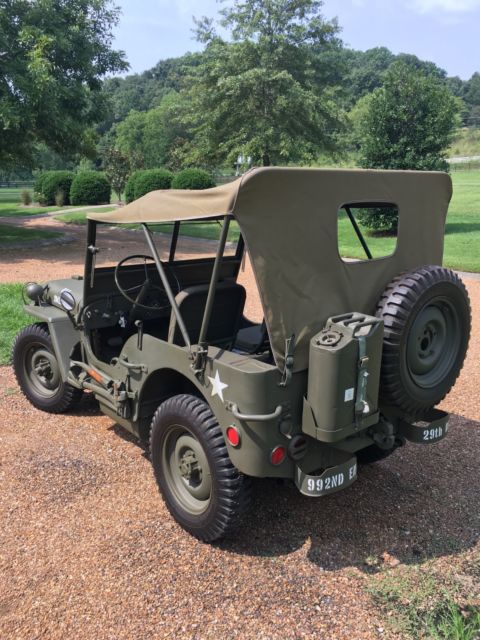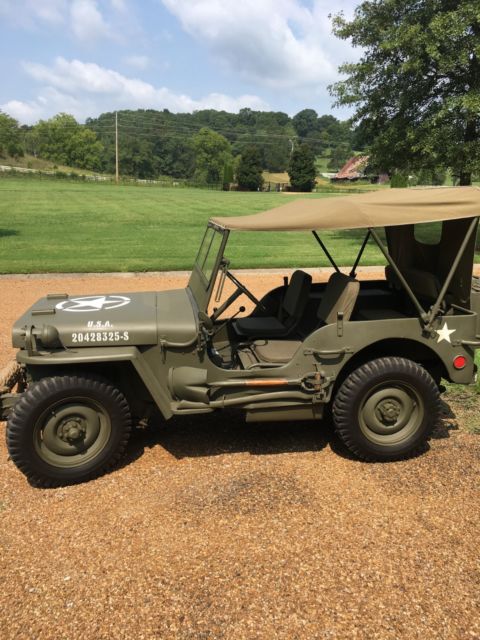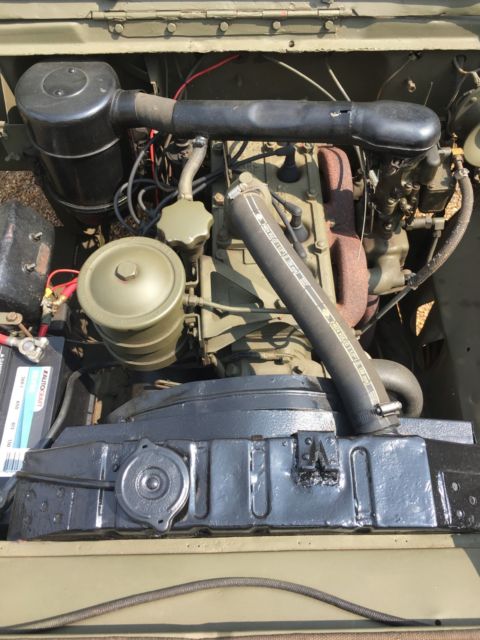WWII era 1943 Ford Jeep
Technical specifications of Ford Jeep 1943
| Price: | - |
|---|---|
| Item location: | Franklin, Tennessee, United States |
| Make: | Ford |
| Model: | Jeep |
| Year: | 1943 |
| Mileage: | 999,999 |
| Color: | Army Green |
| Engine size: | 4 cyl |
| Transmission: | Manual |
| Options: | 4-Wheel Drive |
| Vehicle Title: | Clear |
| You are interested? | Contact the seller! |
Description
If you like automotive history, or WWII history, you will find this Ford GPW Jeep interesting. If you are a Ford fan, or just like to have fun, you will find this Ford fun, and interesting. A brief dive into history seems relevant here, with the acknowledgment that many of you looking at this vehicle will probably know far more than just these highlights already.
The Army standardized and formalized its requirements for a new light vehicle in 1940, then submitted them to 135 U.S. automotive manufacturers for proposals. American Bantam won the design competition, but couldn't build them fast enough to fill the urgent needs of both the U.S. and its allies. So, the government sent Bantam's plans to Willys and Ford, and they both received contracts to build roughly half the "Jeeps" produced during the war. Ford re-designed the "welded flat iron slat" radiator grill, to a stamped grill with 9 vertical slots, that used fewer resources, and is of the type we are familiar with today. After the war, Willys gave their "Jeeps" 7 slots, and trademarked it. That trademarked, 7 slot grill lives on today in modern Jeeps.
If you want one of the Ford built Jeeps, with the Ford designed 9-slot grill, produced during the war, then this "Ford, GPW Jeep" is for you.
Everything is as it should be on this GPW. It has been nicely resprayed in the correct color of flat green. There is a star on the hood in white, and has 29th DIV and 992nd ENG. identifications in white lettering. A tow rope is neatly wrapped around the front bumper. Behind that is the 9-slot, Ford designed, grill with the "black out" lights, and headlights on either side of it. There is a basic canvas top that can be pulled up to minimize the rain that gets in, (or to make it harder to be seen by the enemy), and a fold down windshield. An axe and shovel are mounted to the side, and a jerry can for extra gas, along with a spare tire are mounted to the back.
Inside, everything is pretty basic with a couple interesting items. One is the black out light switch with several different positions, enabling different combinations of lights to operate. There are also several dash plaques full of useful information. The three shifters are for the 3-speed manual trans, 4WD in and out, and hi-low range. Seating is "Army standard" sport buckets, with a folding rear bench seat.
Power is provided by a 134-cubic inch, inline 4-cylinder, gasoline engine. It is fed by a 15-gallon fuel tank with the 5-gallon jerry can backup. Suspension is live axles on multi-leaf springs all around.
General George C. Marshall called this squared-off little vehicle "America's greatest contribution to modern warfare".
